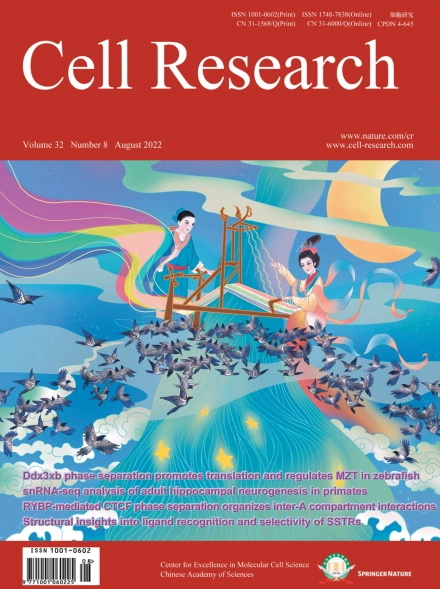
Advanced Search
Submit Manuscript
Advanced Search
Submit Manuscript
Volume 32, No 8, Aug 2022
ISSN: 1001-0602
EISSN: 1748-7838 2018
impact factor 17.848*
(Clarivate Analytics, 2019)
Volume 32 Issue 8, August 2022: 773-776 |
Structure of human NTCP reveals the basis of recognition and sodium-driven transport of bile salts into the liver
Hongtao Liu1 , Rossitza N. Irobalieva1 , Rose Bang-Sørensen1 , Kamil Nosol1 , Somnath Mukherjee2 , Parth Agrawal2 , Bruno Stieger3 , Anthony A. Kossiakoff2 , Kaspar P. Locher1,*
1Institute of Molecular Biology and Biophysics, ETH Zürich, Zürich, SwitzerlandDear Editor,
The sodium taurocholate (TC) co-transporting polypeptide NTCP (SLC10A1) is a secondary active membrane transport protein that mediates the uptake of bile salts from the portal blood plasma into the cytoplasm of liver cells. NTCP was originally cloned from rat and demonstrated to be localized in the basolateral membrane.1 Its activity is a key component of bile acid homeostasis and enterohepatic circulation of bile salts (Fig. 1a), a process that includes at least three additional transporter proteins, namely BSEP, ASBT and OSTα/β.2,3 In addition to its role in mediating bile salt uptake, NTCP also serves as the receptor of the human hepatitis B and D viruses.4 The mechanism by which NTCP recognizes and transports bile salts is not understood, in part because no structural insight into the interaction of NTCP with its substrates is available. While recent studies reported structures of NTCP bound to inhibitory nanobodies5 or Fab fragments,6,7 no substrate-binding pockets were identified.
https://doi.org/10.1038/s41422-022-00680-4